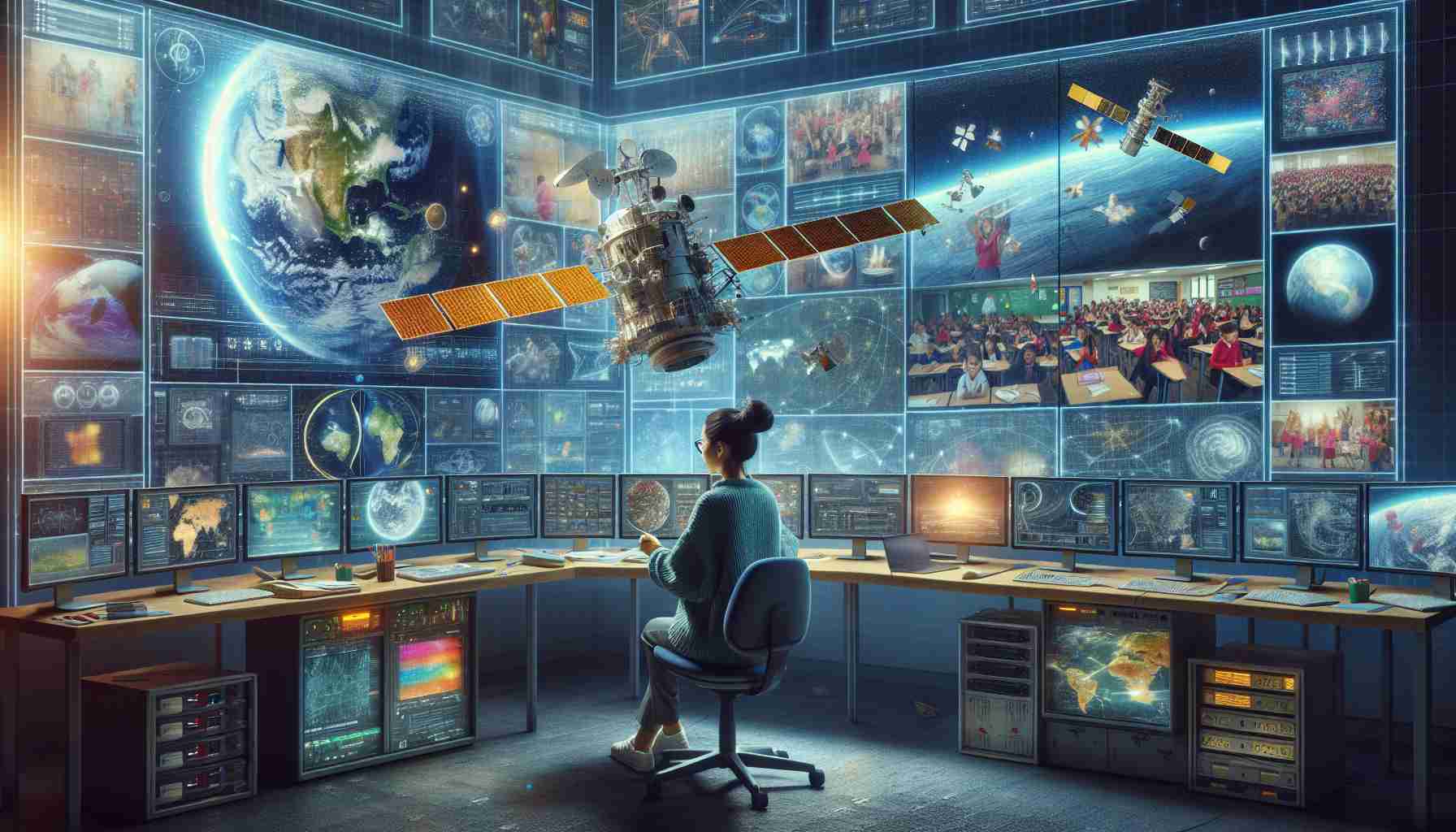- Paul’s home-based command center enables global communications using satellite technology, showcasing his technical prowess.
- He facilitated a significant communication link between French schoolchildren and researchers on Crozet Island via a Qatari satellite.
- Since 2018, Paul’s expertise has been pivotal in launching Mauritius’s first satellite, MIRSAT-1, through collaborative efforts.
- The KiboCUBE program by UNOOSA and JAXA played a crucial role in supporting the project, highlighting international collaboration.
- Mauritius’s journey into space was driven by efforts from the Mauritius Research and Innovation Council and the Mauritius Amateur Radio Society under Paul’s leadership.
- On June 22, 2021, MIRSAT-1 was launched from the ISS, marking a milestone for Mauritius’s presence in space.
- The narrative of global space exploration is moving beyond Western commercial giants to include diverse contributions from around the world.
Nestled within the walls of his unassuming home, Paul orchestrates a universe from his self-constructed command center. With six glowing screens alive with satellite feeds captured by rooftop antennae, his setup turns the ordinary into an extraordinary hub of global communication. Recently, his technical wizardry connected excited schoolchildren in France to researchers stationed on the remote Crozet Island. Using a Qatari satellite, Paul guided this cosmic relay with precision and a keen sense of engineering acumen.
Starting in 2018, Paul took his expertise beyond personal ambition, catapulting Mauritius into the stars with its maiden satellite, MIRSAT-1. Behind this small cube of innovation lies a tapestry of global collaboration, birthing from the KiboCUBE program by UNOOSA and JAXA. This initiative fosters space-faring dreams by enabling the creation and launch of miniature satellites from the International Space Station.
Mauritius, through the Mauritius Research and Innovation Council and the Mauritius Amateur Radio Society, dove into this venture. Under Paul’s mentorship, the groups mastered telemetry and erected a critical communications antenna. Together, they navigated the labyrinthine pathways of international licensing with ITU and IARU.
The world watched on June 22, 2021, as a coalition of volunteers, officials, entrepreneurs, and bureaucrats proudly witnessed their collective creation—MIRSAT-1—soar from the ISS into orbit.
Despite Mauritius’s stride, traditional narratives harboring Western billionaires and commercial giants like SpaceX and Blue Origin often overshadow these humble victories. Yet, beyond the spectacle, an interconnected space economy quietly flourishes worldwide. Figures like Paul stand as proof that space is not solely the playground of the privileged—it’s a frontier where anyone, anywhere, can reach for the stars.
Unveiling the Unsung Heroes of the Space Age: How One Man and a CubeSat Changed the Game
How Did an Unassuming Man Become a Space Pioneer?
Paul’s journey into the realm of satellite communication represents the growing accessibility of space exploration to individuals and smaller nations. His story highlights the reality that space innovation is no longer restricted to large corporations and wealthy countries. With technological acumen and determination, Paul transformed his home into a command center, bridging global communities through satellite communications.
What are the Pros and Cons of Small Satellites Like MIRSAT-1?
Pros:
1. Cost-Effective: CubeSats and similar small satellites are much more affordable compared to traditional satellites, making them accessible to nations or organizations with limited budgets.
2. Educational Opportunities: These projects foster educational growth, inspiring interest in STEM fields among students and young professionals.
3. Flexibility and Shorter Development Cycles: The relatively low cost and modular design allow for experimentation and rapid innovation.
4. International Collaboration: Projects like MIRSAT-1 encourage global partnerships, involving multiple organizations and countries.
Cons:
1. Limited Capabilities: Due to their small size, these satellites can carry fewer and smaller instruments, which may limit their data gathering capacities.
2. Shorter Lifespan: Small satellites often have a shorter operational life, necessitating frequent launches to maintain a constellation.
3. Orbital Debris: As more small satellites are launched, the risk of increasing space debris becomes a significant concern.
How is the Space Market Expected to Grow?
The satellite market is projected to experience substantial growth over the coming decade. With CubeSats leading the evolution of affordable, accessible space exploration, countries and companies are anticipated to invest heavily in satellite technologies. Innovations in miniaturization, propulsion, and communication systems are expected to catalyze new applications in Earth observation, communication, navigation, and scientific research.
What are Some Innovations Stemming from Programs like KiboCUBE?
KiboCUBE, an initiative by UNOOSA and JAXA, has played a pivotal role in democratizing space access through the support of small satellite projects. Innovations include advances in data transmission, Earth observation analytics, and the integration of AI into satellite systems. Such programs have proven vital in supporting underrepresented countries in gaining a foothold in the space industry.
What Security Aspects Should be Considered with Increased Satellite Activity?
The burgeoning of satellite activity presents security challenges that must be addressed:
– Cybersecurity: Protecting data transmission and satellite systems from cyber threats is critical.
– Orbital Safety: As satellite density increases, proactive measures are required to prevent collisions and manage orbital debris.
– Spectrum Management: Ensuring the coordinated use of radio frequencies to prevent interference is essential for maintaining communication integrity.
How Can Smaller Nations Benefit from Engaging in Space Exploration?
Engagement in space exploration can significantly benefit smaller nations by:
– Enhancing Technological Capabilities: Developing expertise in satellite technology helps build national technical competencies.
– Boosting Economic Growth: Involvement in the space economy can stimulate local industries and create high-tech job opportunities.
– Increasing Global Collaboration: Space projects often involve partnerships with international agencies, fostering diplomatic and cooperative relations.
Suggested Resources and Links
For more information on satellite programs and innovations, visit:
– UNOOSA
– JAXA
– SpaceX
– Blue Origin
The achievements highlighted in Paul’s story reflect a broader trend of inclusivity and democratization in space exploration, promising a future where diverse contributors, regardless of their origin, can play integral roles in humanity’s pursuit of the final frontier.












